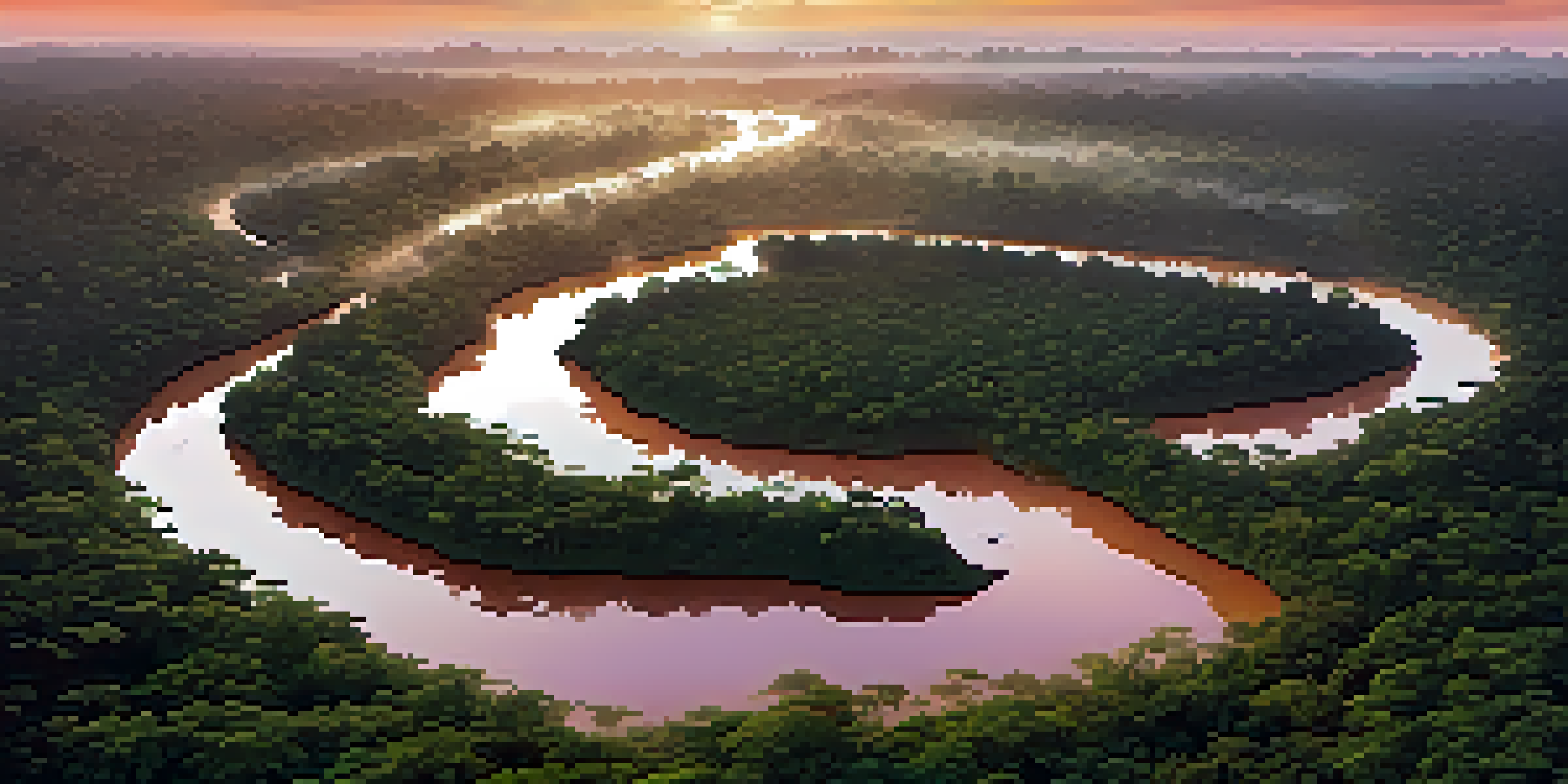Peru's Conservation Efforts: A Blueprint for Sustainable Travel

The Importance of Conservation in Peru's Unique Ecosystem
Peru is home to an extraordinary range of biodiversity, including the Amazon rainforest, the Andes mountains, and coastal ecosystems. These areas are not just stunning landscapes; they are vital for the planet’s health, supporting countless species and helping to regulate the climate. Conservation efforts in Peru are essential to protect these natural wonders from threats like deforestation, pollution, and climate change.
The Earth does not belong to us: we belong to the Earth.
With over 60% of its territory covered by forests, Peru plays a crucial role in global carbon sequestration. By preserving these ecosystems, the country can combat climate change while maintaining the livelihoods of local communities. This delicate balance highlights why conservation is not just an environmental issue but also a social and economic one.
Understanding the significance of conservation in Peru is the first step toward appreciating the country’s efforts. By recognizing that protecting nature is intertwined with sustainable travel, visitors can make informed choices that contribute to the preservation of Peru's breathtaking landscapes.
Community Involvement: Engaging Locals in Conservation
One of the standout features of Peru's conservation efforts is the active involvement of local communities. By empowering indigenous populations and local residents, conservation projects are more likely to succeed. This grassroots approach not only fosters a sense of ownership but also ensures that the needs and knowledge of these communities are respected and utilized.

For example, in the Amazon basin, various community-led initiatives focus on sustainable harvesting of natural resources, allowing locals to benefit economically while preserving their environment. This model demonstrates that conservation can go hand in hand with economic growth, creating a win-win situation for both people and nature.
Community Empowerment in Conservation
Engaging local communities in conservation efforts fosters ownership and respects indigenous knowledge, creating sustainable solutions.
Engaging communities in conservation efforts also enhances cultural preservation. As locals share their traditions and knowledge about the land, visitors gain a richer understanding of Peru's heritage, making their travel experience more meaningful.
Protected Areas: Safeguarding Biodiversity Hotspots
Peru has established an extensive network of protected areas, including national parks and reserves, to safeguard its diverse ecosystems. These protected areas, such as the Manu National Park and the Tambopata National Reserve, are crucial for conserving wildlife and plant species that are unique to the region. They serve as safe havens where nature can thrive without the pressures of urbanization and exploitation.
In every walk with nature, one receives far more than he seeks.
Moreover, these parks offer sustainable tourism opportunities, allowing travelers to experience Peru’s natural beauty while minimizing their impact. Guided tours, eco-lodges, and educational programs within these areas highlight the importance of conservation and promote responsible travel practices.
By visiting these protected areas, travelers contribute to funding and awareness efforts, helping to ensure that these vital ecosystems remain intact for future generations. This symbiotic relationship between conservation and sustainable tourism serves as a model for other countries to follow.
Eco-Tourism: A Sustainable Travel Alternative
Eco-tourism has emerged as a key player in Peru's conservation strategy, promoting responsible travel that respects the environment and local cultures. Travelers are increasingly seeking experiences that align with their values, and Peru offers a plethora of eco-friendly options, from guided rainforest hikes to community-based tourism initiatives. These experiences not only provide unforgettable memories but also support local economies.
For instance, eco-lodges in the Amazon rainforest are designed to have minimal environmental impact while offering guests the chance to immerse themselves in nature. By choosing eco-friendly accommodations and activities, travelers can ensure that their visit contributes positively to both the environment and the community.
Protected Areas for Biodiversity
Peru's extensive network of protected areas safeguards unique ecosystems while promoting sustainable tourism opportunities.
Ultimately, eco-tourism in Peru is about more than just seeing beautiful landscapes; it’s about fostering a deeper connection to the planet and understanding the importance of conservation. This approach empowers travelers to make choices that align with sustainable practices, transforming their journeys into meaningful contributions to the preservation of Peru’s natural treasures.
Innovation in Conservation: Technology and Research
Peru is leveraging technology and research to enhance its conservation efforts, making strides in areas like wildlife monitoring and habitat restoration. Innovative tools such as drones and camera traps allow researchers to collect valuable data on species populations and behaviors, helping to inform conservation strategies. This data-driven approach ensures that efforts are targeted and effective.
In addition, partnerships with universities and research institutions foster collaboration that leads to groundbreaking studies on biodiversity in Peru. These collaborations not only contribute to scientific knowledge but also raise awareness about the importance of conservation among both locals and visitors.
By embracing technology and research, Peru demonstrates that conservation is a dynamic field that can adapt to new challenges. This forward-thinking attitude invites travelers to engage with the science behind conservation, making their experiences both educational and impactful.
Legislation and Policy: Framework for Conservation
Strong legislation and policy frameworks are crucial for the success of conservation efforts in Peru. The government has established laws and regulations aimed at protecting natural resources, promoting sustainable land use, and combating illegal activities like poaching and logging. These policies create a solid foundation for conservation initiatives and ensure that they are backed by legal support.
One notable example is the recognition of indigenous land rights, which empowers local communities to manage their resources sustainably. By integrating traditional ecological knowledge with modern conservation practices, Peru can create effective strategies that honor both cultural heritage and environmental sustainability.
Eco-Tourism as a Conservation Tool
Eco-tourism in Peru encourages responsible travel that supports conservation efforts and enhances local economies.
Ultimately, effective legislation provides the necessary tools for conservationists to safeguard Peru’s unique ecosystems. When travelers understand the importance of these policies, they can advocate for responsible practices and encourage the continued support of conservation efforts.
The Future of Conservation in Peru: Challenges and Opportunities
While Peru has made significant strides in conservation, challenges remain, including climate change, deforestation, and socio-economic pressures. However, these challenges also present opportunities for innovation and collaboration. By addressing these issues head-on, Peru can lead the way in sustainable travel and conservation efforts that can inspire other nations.
As global awareness of environmental issues grows, tourists are increasingly looking for destinations that prioritize sustainability. This shift in consumer behavior can drive support for conservation initiatives in Peru, creating a cycle of positive reinforcement that benefits both the environment and local communities.

Looking ahead, the future of conservation in Peru relies on continued engagement from both locals and travelers. By working together, they can forge a path toward a sustainable future where tourism and conservation coexist harmoniously, ensuring that the beauty of Peru endures for generations to come.